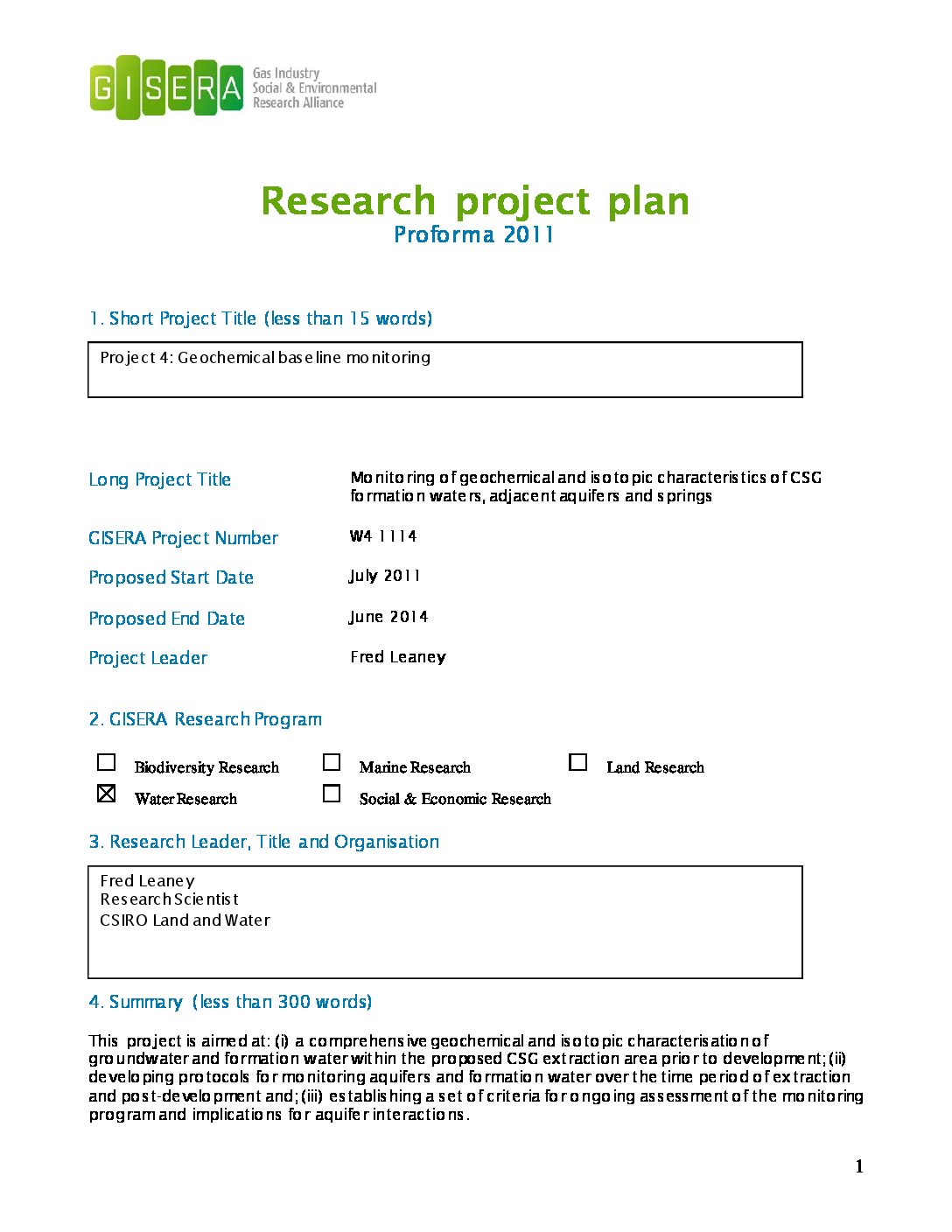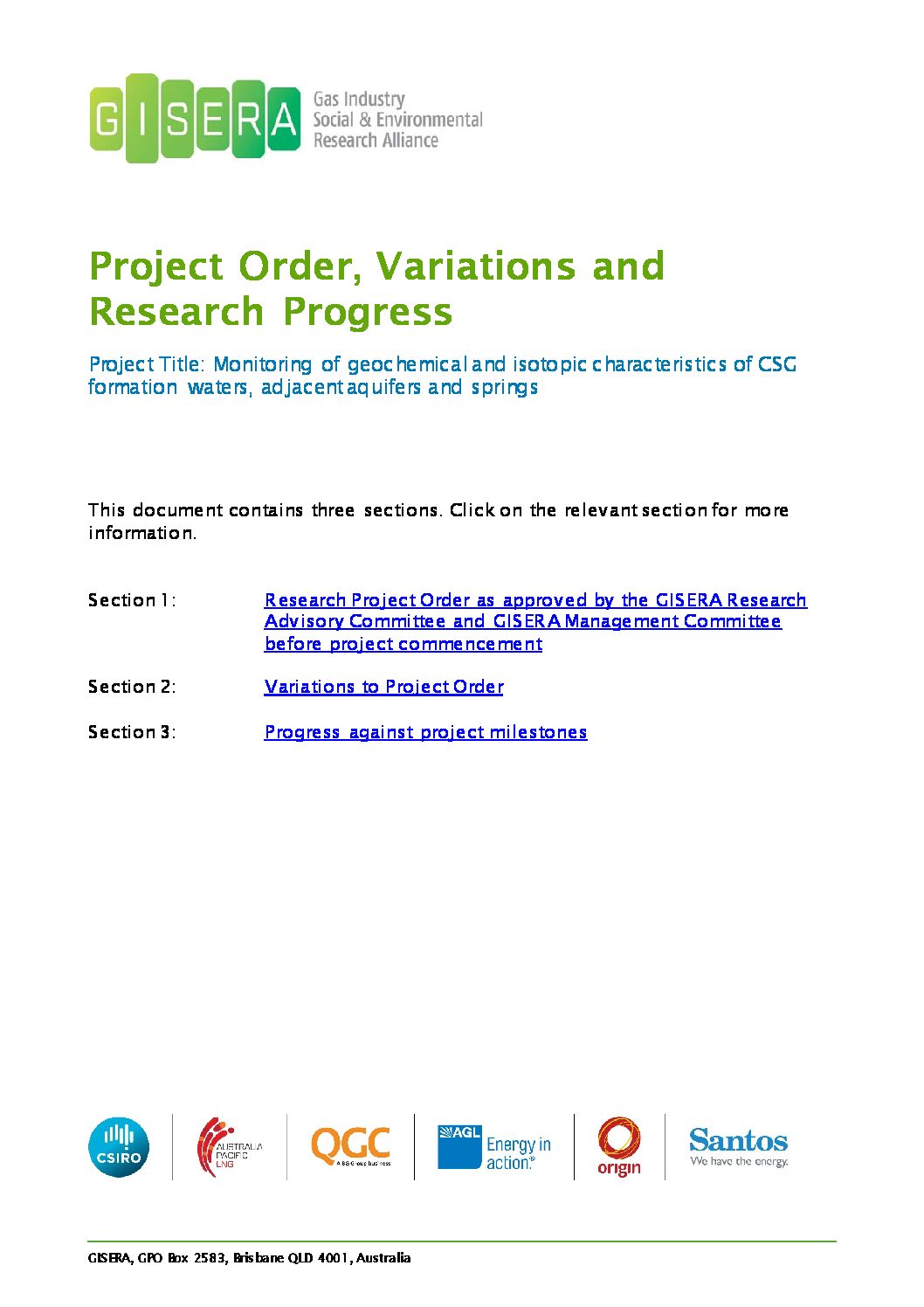Geochemical baseline monitoring
This project aimed to characterise the baseline geochemistry of groundwater and formation water prior to and during initial stages of development to understand groundwater age and origin.
This resulted in baseline measures of groundwater quality and protocols for monitoring changes in groundwater quality, during and after development.
Transcript for Understanding groundwater movement video
[Gas Industry Social & Environmental Research Alliance (GISERA) logo appears on screen]
[Text appears: Geochemical Baseline Monitoring Research update]
[Image changes to show a Warning sign with text: Do not excavate High Pressure Gas Pipeline. Emergency Call 1800 076 251 Quote location]
[Image changes to show a mining plant and workers]
Narrator: Predicting environmental impacts of coal seam gas developments on Australia’s water resources relies on a thorough understanding of groundwater systems and water flows.
[Image changes to show a map of Australia with the Surat Basin section marked in red]
The Surat Basin is the focus area of many environmental impact studies because coal seam gas is extracted from the Walloon Coal Measures that lie beneath the basin. One of these studies is on the geochemistry of groundwater in the Surat Basin.
[Image changes to show Axel Suckow, Research Scientist CSIRO Land & Water]
Axel Suckow: Well the project is about getting a baseline of the geochemistry and mainly of the age of the groundwater in the area of the coal seam gas production.
[Image changes to show groundwater and scientists preparing samples]
There are several aims in this project. One of them is to characterise the age of the groundwater in the different aquifers, and during this field trip especially we focus on the Hutton Sandstone.
Megan: So I’m just preparing some chemistry and stable isotopes analysis.
Axel Suckow: Age has a very different meaning for groundwater as compared to a human being where the age is a unique number This is because groundwater as we take it as a sample from one bore is actually a mixture of different recharge locations and different times that flow together in this one well
Megan: So we do one unfiltered and one filtered and acidified.
Axel Suckow: Another aim of the project is to test a new method which is able to determine the speed of groundwater through an aquitard.
[Image changes to show cattle being loaded onto a cattle truck]
We try to establish an understanding of the aquifer system that we have here.
[Image changes to show a computer generated map of where the aquifer systems are located]
The aquifer system consists of several layers of aquitards and aquifers. The aquifers are where the farmers get their water from. Aquitards hinder the groundwater flow.
[Image has changed back to a shot of groundwater and scientists taking samples]
During this field trip our team collects groundwater samples in one specific aquifer, the Hutton Sandstone – which is below the Walloon Coal Measures where the gas is produced, from the recharge area in the North of the Surat Basin down to the south along the groundwater flow close to Roma.
[The areas Axel describes are zoomed in on, on the computer generated map]
We try to see the increase of water age along these flow paths and we want to have also one depth profile where we sample all the different aquifer layers in one spot to understand the aquifer system as a whole.
[Image has changed back to Axel and then to some of the equipment the scientists are using] [Image has changed to show a scientist using liquid nitrogen in an experiment]
The knowledge that we obtain now on groundwater age is important because it will help us to determine the impact of the coal seam gas production in the Walloon Coal Measures if we can compare that with future measurements.
[Image changes to show Axel and colleagues discussing data they are looking at on a computer screen]
Well the quartz helium work that we do is a very novel methodology. It tries to determine the helium concentration in pore water from the helium concentration in quartz, which is in equilibrium to this pore water.
[Image has changed back to Axel]
The idea behind is the aquifer system has many, many layers, like a layer cake, and some of them are very transmissive, so the water flows very good in them, that’s the aquifers.
[Image of porous rock core sample]
And other layers the water flows very slowly in them. That’s what we call the aquitards.
[Image of non-porous rock core sample]
And these aquitards play the major role in the coal seam gas business because they hinder the ground water of the aquifers to go to where the gas production takes place, because the gas production depressurise these layer. But since the water flows so slowly in them, it’s very hard to characterise them and the quartz helium method is one way to characterise their transmissivity.
[Music plays and the Gas Industry Social & Environmental Research Alliance (GISERA) logo appears on screen]
[The CSIRO and the Australia Pacific LNG logos appear on screen]
[Credits: Additional footage courtesy of Australian Broadcasting Corporation Library Sales and QLD Department of Natural Resources & Mines]
January 2014


